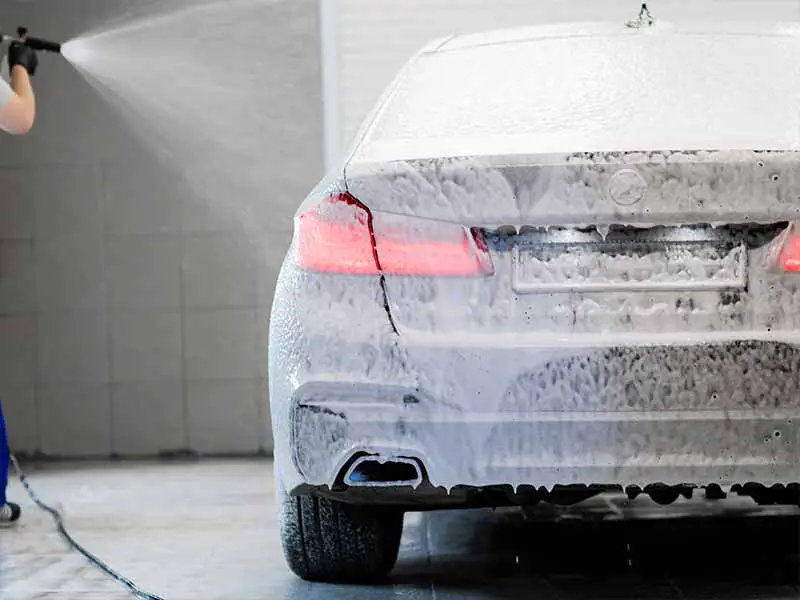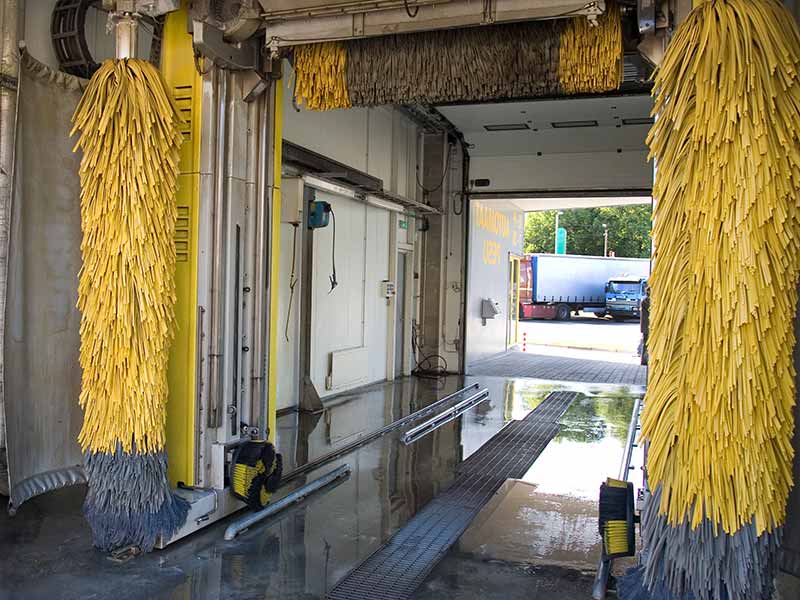Table of Contents
Some people think that once the weather gets colder, they can forget about washing their car. In fact, the opposite is true. You should be cleaning your car more frequently in the winter months in order to avoid rust and other lasting damage.
If you want to know how often you should wash your car in the winter, keep reading. Our expert team of detailers put together this guide to help you find out exactly how often you should clean your vehicle when the months get cold.
How Often Should You Wash Your Car In The Winter?
Every 2 weeks is a good regular schedule to wash your car to keep the undercarriage clear of road salt.Why Washing Your Car Matters
Have you ever thought about why you should wash your car in the first place? It’s something that we all do and a lot of us don’t understand the importance.
Of course, washing your car makes the vehicle look cleaner and newer, but there’s more going on. Washing your car is a quick way to preserve your vehicle’s paint. It gets rid of grime, pollen, and rust-causing debris that would otherwise eat at your topcoat.
It’s also a great way to start a full detailing process that involves waxing, clay barring, polishing, and finishing your car. Without washing it first, you might do damage to your topcoat and any subsequent steps won’t work as well.
It Matters Even More in the Winter
Washing your car becomes even more important in the winter months, especially in regions that get snowy.
When an area expects a snowfall, they’ll typically lay down salt or brine on the roads. These products are great at melting down ice and eating away at snow, but they can be devastating to your car’s paint.
Road salt is highly acidic and corrosive, and it will eat away your topcoat. If you keep the salt on your vehicle for too long, you’ll notice rust spots appear in these areas. However, the salt is only dangerous when it’s on your car.
When you wash your car, you’ll be removing this salt and preventing rust on your car.
You might not even realize you have salt on your car in the first place. Take a look around your wheels on your car’s body. If it has a white dust-like layer on the paint, then this is salt.

How Often Should You Wash Your Car in the Winter
There’s no specific rule when it comes to washing your car. Our suggestion is that you should wash your car frequently in the winter. It’s an easy way to remove corrosive salt from your car, and it will prevent rust in the long run.
If you see salt on your car, that should be your reminder to wash it.
In the Northeast, you might find yourself washing or rinsing your car multiple times a week to prevent lasting damage from salt.
In Southern states, the frequency of washing from season to season is less important. Snow is less common in warmer regions, so salted roads are also less common. You can stick to washing your car once or twice a month.
Tips to Remember for Washing Your Car in the Winter
Since you’ll be washing your car in a colder environment, there are a few things to keep in mind. Here are some tips to remember when washing your car in the winter.
Clear Off the Snow First
It’s tempting to start washing your car even though there’s snow on it. The truth is that debris can be hiding in the snow that can scratch your car and damage your topcoat.
In addition, you should never use water to get rid of snow because the water can quickly freeze and make an even more stubborn surface of ice on your car.
Instead, take some time to clear off the snow before you start washing. Use an automotive-grade snow brush. Never use an ice scraper or shovel to get rid of snow on your car. This can scratch your vehicle and do lasting damage.
Once the snow is cleared off, then you can start washing with soap and water. Some detailers might even use a microfiber towel after clearing off the snow to ensure nothing else will get in the way of the subsequent wash.
Wash in Direct Sunlight
Using the sun to keep your car warm during a carwash is a great idea. This can keep the ice at bay and prevent parts of your car from freezing while you wash your vehicle. The best option is to wash your car in the late morning, so you get an even coverage of sun over your car.
This means that you should pull your car into the driveway in an uncovered area.
Consider Using a Professional Drive-Thru Car Wash
We understand that detailers like to DIY a lot of their cleaning, but there’s something to be said about using drive-thru car washes in winter. You don’t have to worry about dealing with freezing temperatures and getting uncomfortably soaked while washing your car.
Instead, let the machine do all the work for you. This won’t get you the best clean possible, but it will get the job done and keep you comfortable during the process.
Don’t Forget to Dry Your Car
After washing your car, you should always dry it. In the warmer months, drying your car will prevent water spots and will remove some haze that happens when the soapy water dries on its own.
In winter, drying your car is even more important. When water sits around in cold weather, it can turn to ice. This could mean that things like your windshield, car doors, windshield wiper nozzles, and trunk can become frozen solid. Getting them to thaw is a chore and a waste of time — all you need to do is wipe down your car with a few microfiber towels after washing it.

Helpful Links
Conclusion
As you just saw, we covered the specifics about washing your car in the winter. You might find yourself doing it multiple times a week, as long as there’s salt on the road. Also, keep our winter washing tips in mind in order to get the best results each time.
If you want to learn more about DIY detailing, explore the rest of our blog.









